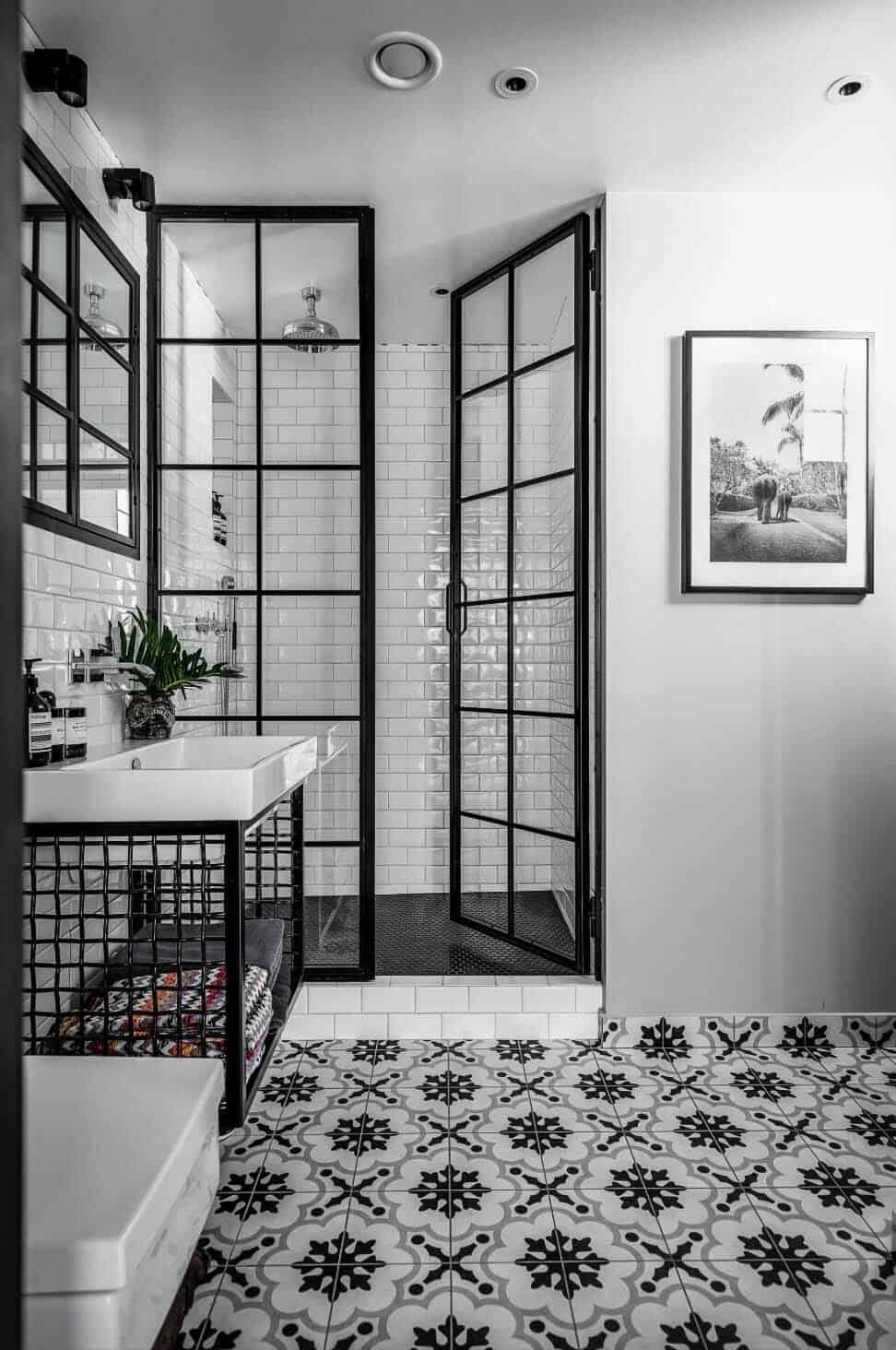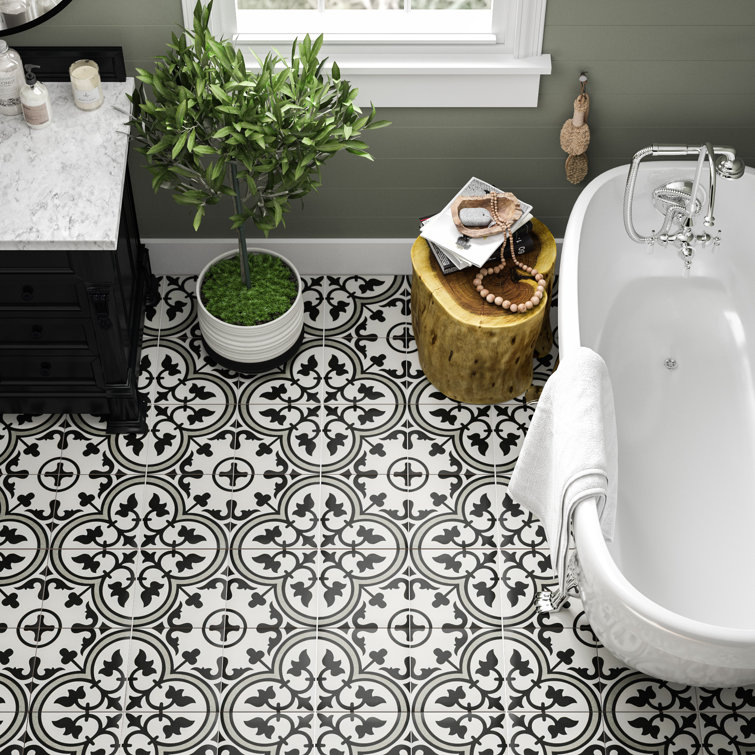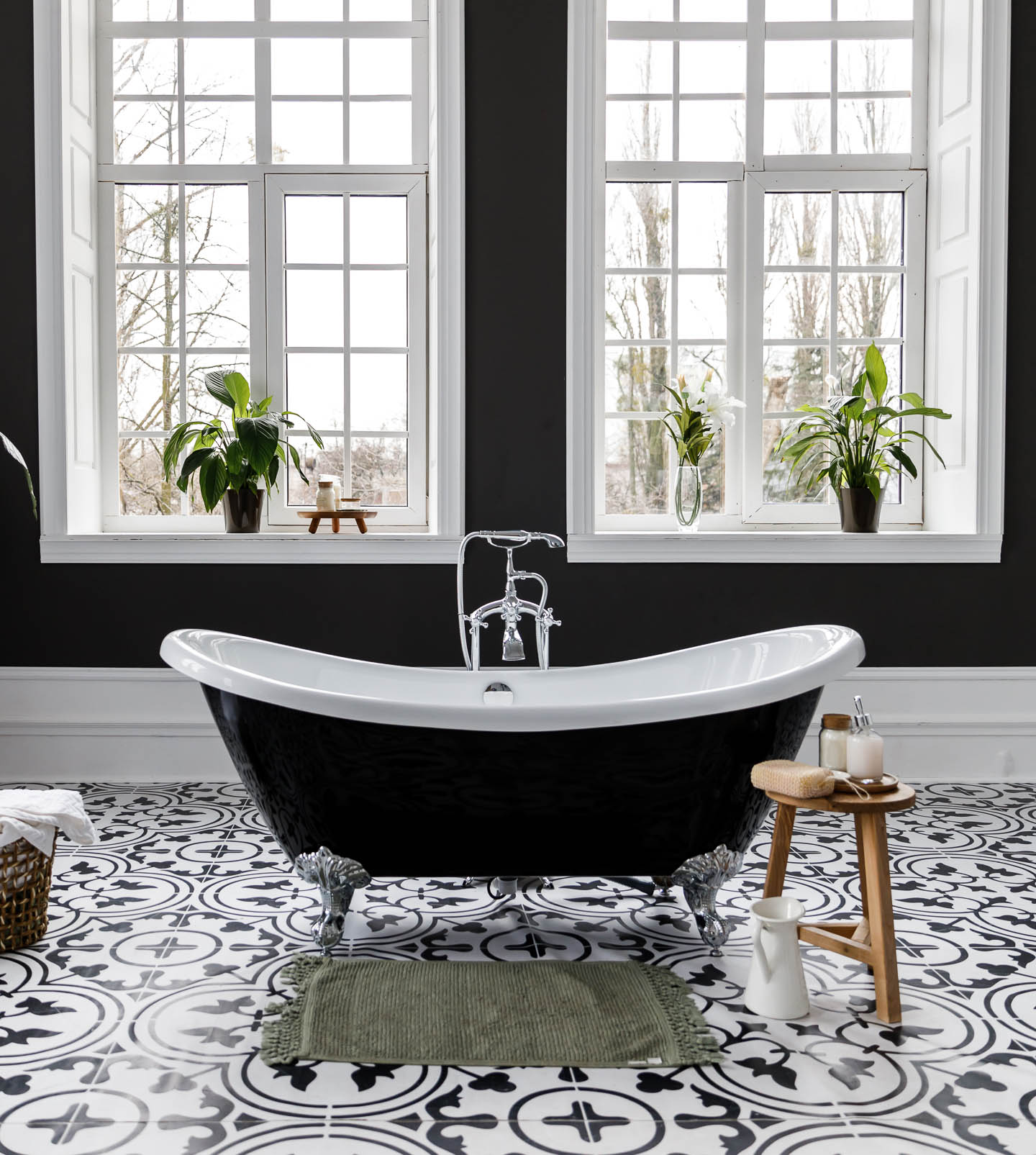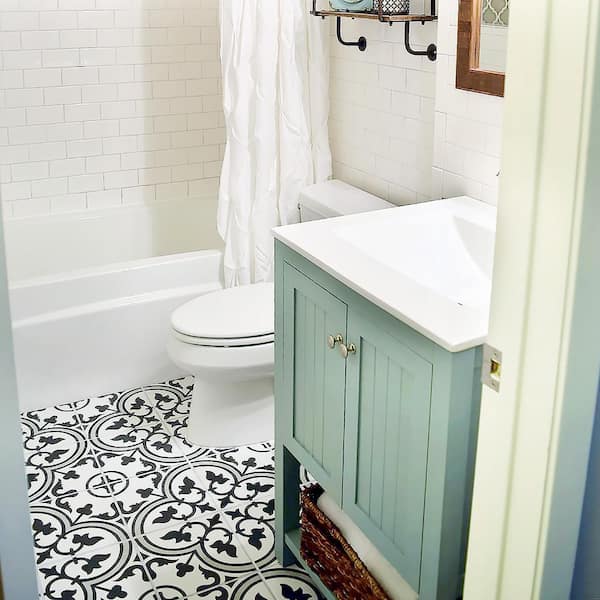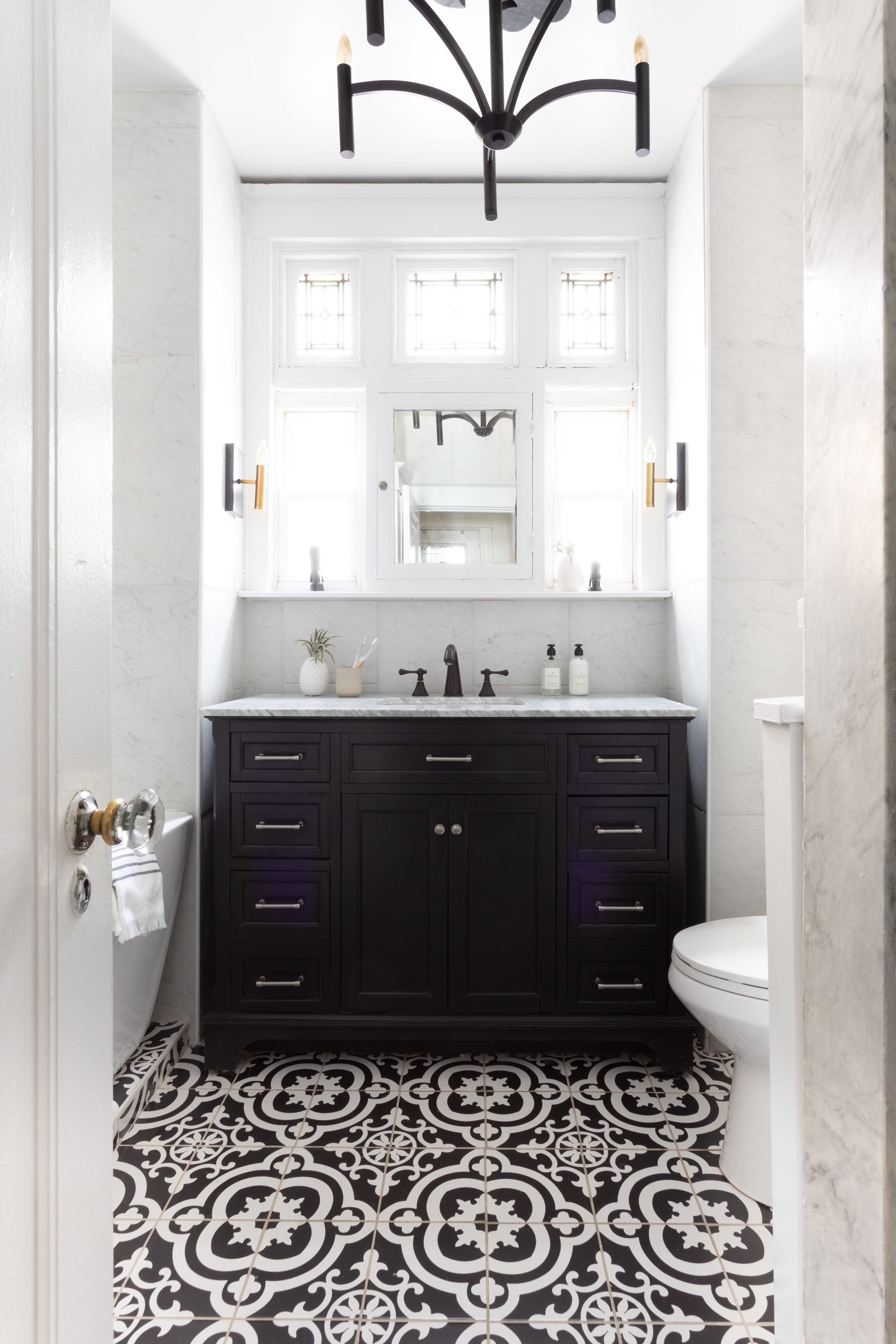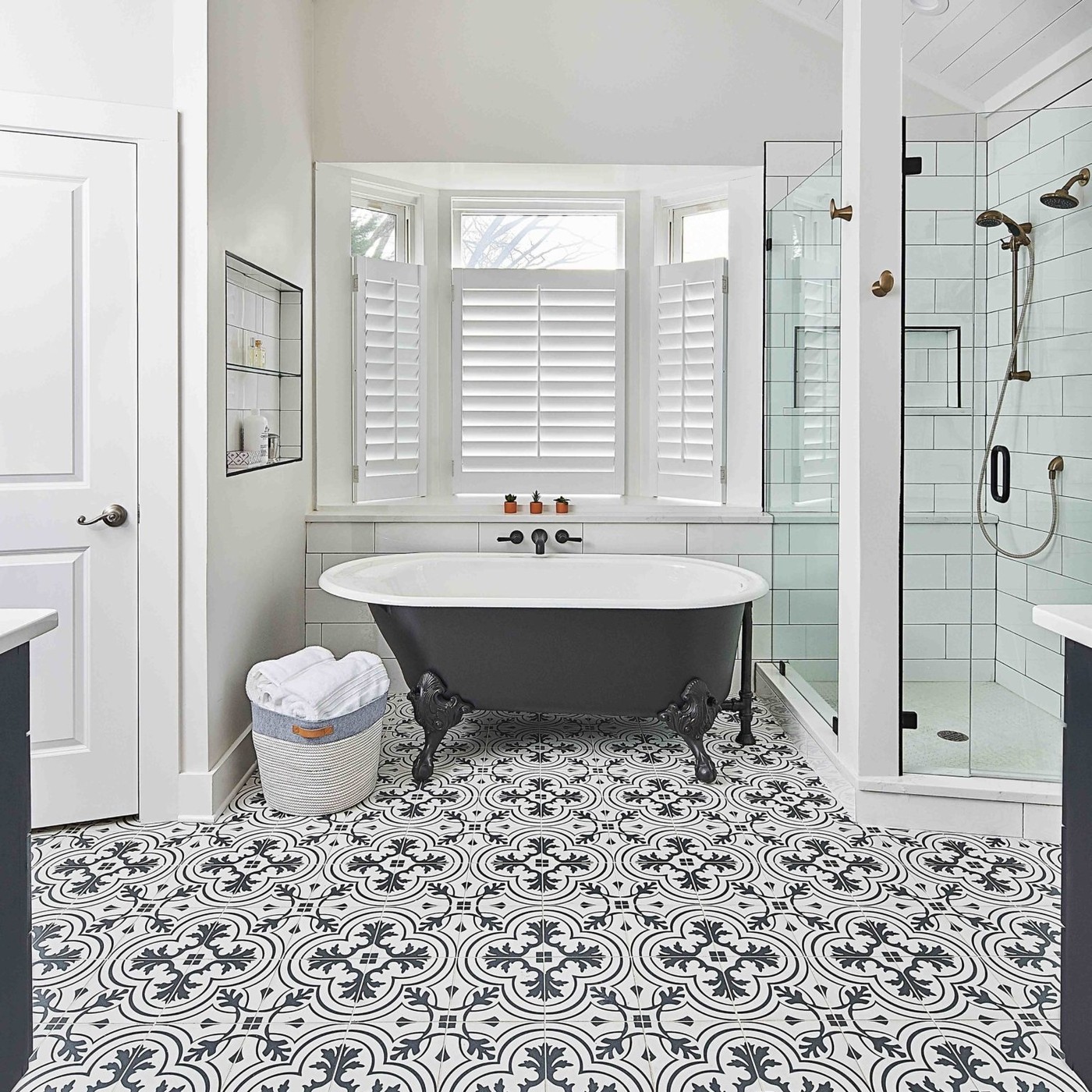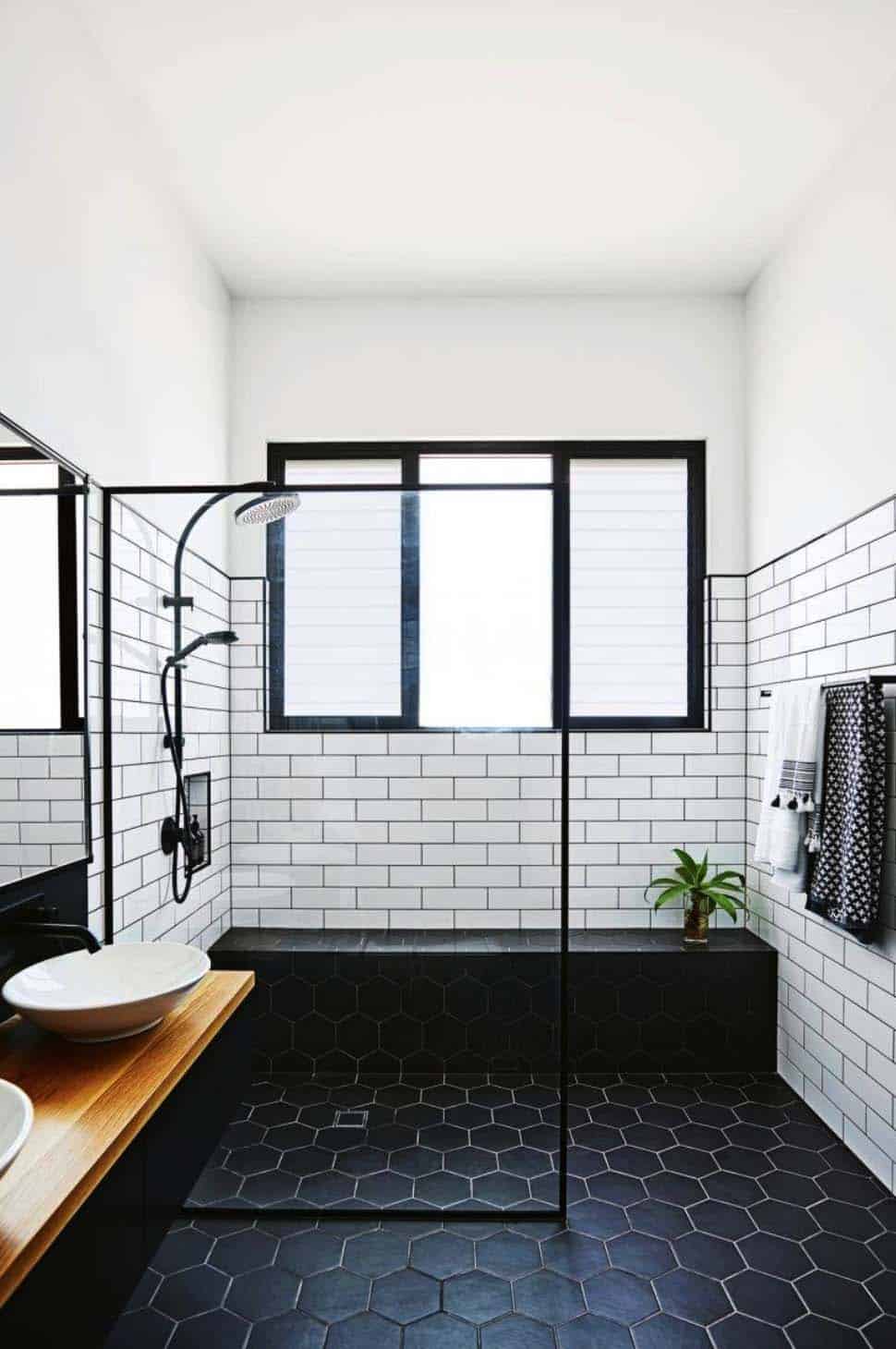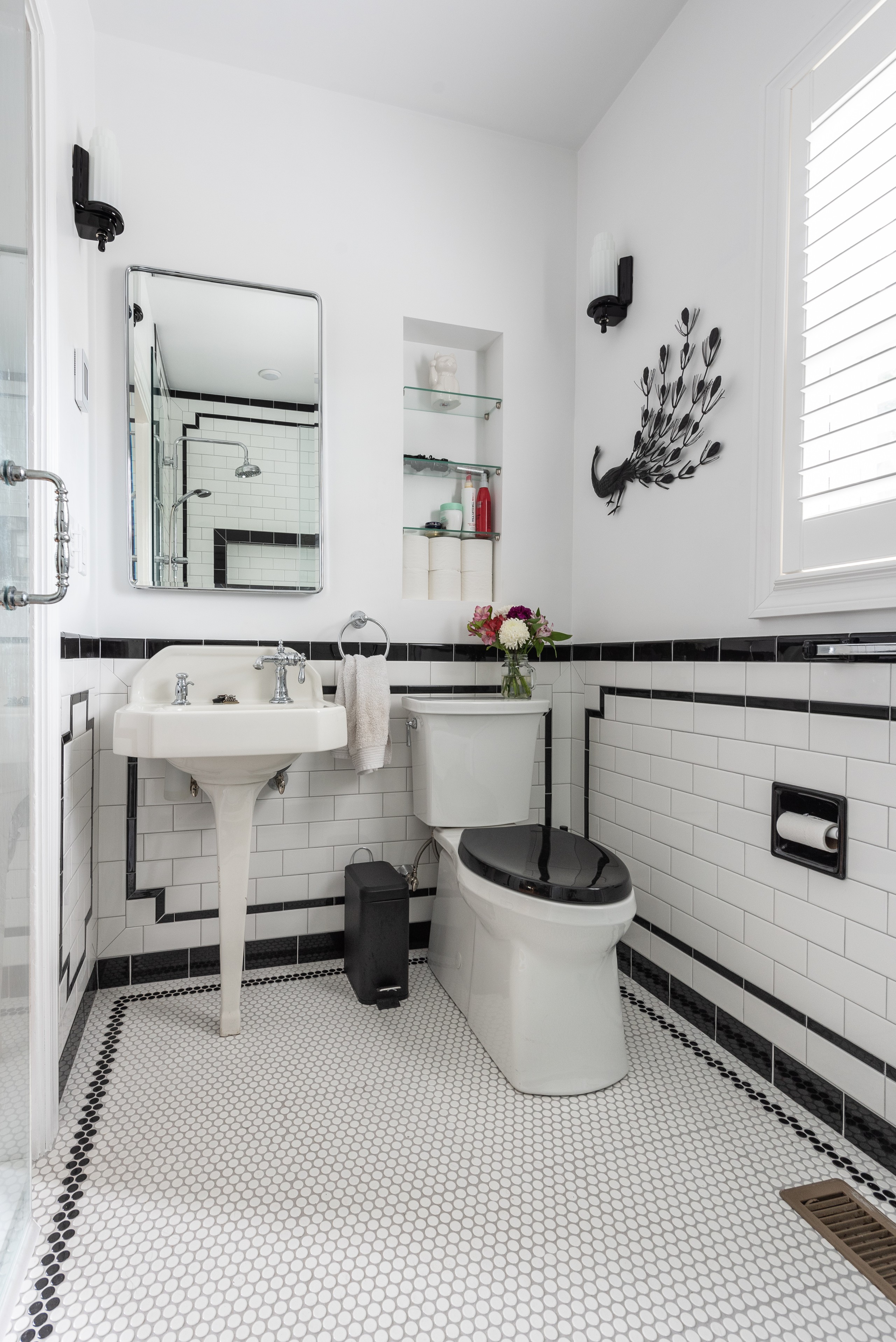When it comes to designing a bathroom, choosing the right tile color and style is one of the most essential decisions. Black, white, and grey tiles have become timeless choices for bathrooms, combining elegance with a touch of modernity. I find that these colors, while classic, also open up endless design possibilities, enabling anyone to create a space that’s sophisticated yet functional. Each shade—black, white, and grey—carries its aesthetic and mood, and when combined thoughtfully, they can transform an ordinary bathroom into a striking, stylish retreat.
One reason why I love black bathroom tiles is because of their boldness. Black tiles create an immediate sense of drama and sophistication that’s hard to replicate with lighter shades. In smaller bathrooms, it may seem counterintuitive to go with dark colors, but when done right, black can create depth, making the space feel luxurious and intimate. For instance, pairing matte black tiles with contrasting metallic fixtures—like brass or chrome—creates a sense of richness and balance. On the other hand, glossy black tiles offer a reflective quality that can help distribute light and add a subtle sparkle to the bathroom.
White bathroom tiles are a classic staple that never seems to go out of style. A fully white-tiled bathroom embodies cleanliness and simplicity, making it a go-to for many. White tiles also have the advantage of reflecting light, making bathrooms appear larger and brighter. I’ve noticed that they work especially well in small bathrooms or spaces with limited natural light. Moreover, white tiles serve as a perfect backdrop for more colorful or unique bathroom decor. One popular design is using subway tiles, a timeless choice that brings a touch of retro charm to a modern bathroom setup.
Grey bathroom tiles, on the other hand, bring in a contemporary, neutral element that suits both traditional and modern designs. Grey comes in a wide spectrum—from light silver to dark charcoal—and each shade offers different design opportunities. Light grey tiles work well in achieving a calm, serene environment, which is perfect if you want your bathroom to feel like a spa retreat. Darker shades of grey can add drama but in a subtler way than black, making them an ideal choice for those looking to add depth without overpowering the space.
One of the best things about these colors is how seamlessly they can blend in the same space. I find black, white, and grey tiles incredibly versatile; they allow for layering and contrast, adding visual interest without overcrowding the design. For instance, a bathroom could feature a black tile floor, white walls, and grey accents, like in the shower or around the vanity. The result is a balanced look that feels cohesive but not overly monochromatic. Mixing textures, such as pairing glossy and matte finishes, further enhances the look, making it feel dynamic and rich in detail.
Using patterned tiles is another way to incorporate black, white, and grey tones into the bathroom. Patterned tiles are especially great if you’re looking to add character without overwhelming the space. There are many patterns to choose from, ranging from classic herringbone to intricate geometric designs. I often suggest using patterned tiles on the floor while keeping the walls simpler; this creates a focal point in the bathroom while maintaining a clean and modern look. Another popular choice is using mosaic tiles in the shower or as a backsplash, adding a hint of artistry to the space.
Texture also plays a significant role in the overall look and feel of a bathroom with black, white, and grey tiles. A combination of smooth and rough surfaces can elevate the design by creating a tactile experience. For example, pairing rough-textured grey tiles with smooth white tiles can make the bathroom feel both elegant and grounded. The contrast in texture also enhances light play, with different surfaces reflecting light differently. Matte tiles offer a muted, understated look, while gloss tiles add shine and amplify the bathroom’s brightness.
Tile shape can also influence the style of a bathroom. Classic rectangular or square tiles offer a clean, straightforward look, while hexagonal or penny round tiles add a hint of whimsy. Hexagonal tiles, for instance, have become a popular choice for modern bathrooms and work well in black, white, or grey. I love using hexagonal black tiles on the floor, which can add an unexpected twist, while a combination of white and grey hexagons on the wall can create a seamless gradient effect. This mix of colors and shapes turns an ordinary bathroom into a visually engaging space.
Another popular approach is creating a focal point with contrasting tile colors. For example, an all-white bathroom can instantly be modernized by adding a black or grey tiled shower wall. This contrast draws the eye and breaks up the monotony of a single color, making the bathroom feel more curated and intentional. Adding black grout to white tiles or white grout to black tiles is another clever way to create contrast and highlight the pattern of the tiles, lending a bit of personality to the bathroom without going overboard.
I find that lighting is a crucial factor to consider when working with black, white, and grey bathroom tiles. Lighting can enhance or diminish the color scheme, depending on the fixtures and their placement. Bright, cool-toned lighting can make grey tiles appear more silver and enhance the modern feel of the space, while warm lighting can bring out a softer side to black and grey tones, creating a cozy and inviting atmosphere. Incorporating a mix of ambient, task, and accent lighting ensures that each area of the bathroom is well-lit and the color scheme shines.
The placement of tiles is equally important, as it affects the flow and perception of the bathroom’s space. Vertical tile placement can make walls appear taller, while horizontal placement adds width. In smaller bathrooms, tiling up to the ceiling with white tiles can make the room feel airier and larger, while an accent wall in black or grey can add interest without overwhelming. For larger bathrooms, creating zones with different colored tiles, such as a grey vanity area and black shower enclosure, can help define spaces while keeping the overall design cohesive.
Maintenance and cleanliness are essential considerations, especially in a space as frequently used as a bathroom. Black tiles, while dramatic and beautiful, can show water stains and soap residue more easily than lighter colors, so regular cleaning is necessary to maintain their allure. On the other hand, white tiles are notorious for showing grime, especially on grout lines, which can quickly become an eyesore. Grey tiles often fall somewhere in the middle, making them a practical choice for low-maintenance elegance. Choosing the right tile material and finish can make cleaning easier, too; for instance, glazed tiles resist stains better than unglazed ones.
In terms of materials, ceramic and porcelain tiles are popular for black, white, and grey bathroom designs due to their durability and water resistance. Ceramic tiles come in a wide range of colors and finishes, making them an affordable and versatile choice, while porcelain tiles are denser and less porous, offering increased longevity. Natural stone tiles in these shades are also an option, although they may require more upkeep. I think stone tiles, especially in grey tones, add a sense of organic warmth to a bathroom, balancing out the sleekness of black and white.
It’s also worth considering eco-friendly tile options. Recycled glass tiles, for example, are available in various colors, including black, white, and grey. These tiles add a unique sparkle to the bathroom while being a sustainable choice. Likewise, ceramic and porcelain tiles can be sourced responsibly, so it’s possible to achieve a beautiful and environmentally conscious bathroom.
When it comes to finishing touches, accessories can help bring out the beauty of black, white, and grey tiles. Towels, bath mats, and countertop decor in contrasting colors—like deep green plants or warm wooden elements—can add warmth and personality to the bathroom. I find that metallic accents, such as gold or brass fixtures, look particularly stunning against black or grey tiles, while stainless steel or chrome tends to complement white tiles for a sleek, modern vibe.
Ultimately, black, white, and grey bathroom tiles offer a timeless palette that’s perfect for expressing both creativity and taste. Whether you’re going for a modern minimalist look or a luxurious spa-like retreat, these colors provide a sophisticated foundation that’s adaptable to a range of styles. With the right mix of color, texture, and lighting, it’s easy to create a bathroom that feels both stylish and personal.
Common Mistakes to Avoid
Overusing Dark Colors: It’s easy to fall in love with black tiles, but using too much can make the bathroom feel cramped or oppressive. Balance dark colors with lighter ones or restrict them to smaller areas like accent walls.
Ignoring Maintenance Needs: Dark tiles can show soap scum and water spots, while white grout is prone to discoloration. Ensure you have a cleaning routine in place that works with your tile color choices.
Inconsistent Lighting: Without adequate lighting, a black, white, and grey color scheme may feel too harsh or dull. Layer different lighting types and consider warm or cool tones depending on your tile shades.
Mismatched Finishes: Combining glossy and matte tiles without careful planning can create a disjointed look. Ensure that finishes complement rather than clash.
Choosing Style Over Functionality: Some tiles, like natural stone, require more maintenance than others. Assess the pros and cons of each material to avoid issues down the road.
Are black tiles suitable for small bathrooms?
Black tiles can work beautifully in small bathrooms, but they should be used strategically. Incorporating them as accent tiles or pairing them with plenty of light-colored tiles can prevent the space from feeling confined. Strategic lighting is also crucial to enhance the appearance of black tiles in a small bathroom.
How do I keep white grout clean in a bathroom?
White grout requires regular maintenance to stay pristine. Sealing the grout lines can prevent stains, and cleaning with a gentle bleach solution can help maintain its color. Using darker grout with white tiles can also reduce the appearance of dirt over time.
What’s the best tile finish for a low-maintenance bathroom?
Matte finishes often require less maintenance than glossy tiles, as they are less prone to water spots and fingerprints. For easier cleaning, glazed tiles are also a great option, as they resist stains better than unglazed varieties.
Do grey tiles make a bathroom look cold?
Grey tiles can appear cool, especially in certain lighting, but pairing them with warm-toned lighting or adding warm accessories like wooden decor can offset this effect. The choice of undertone—like beige-grey versus blue-grey—also affects the warmth of the overall look.
Can I mix different tile shapes in a bathroom?
Yes, mixing shapes like hexagons with rectangles or squares can add depth and interest to your bathroom. The key is to maintain a cohesive color scheme and avoid overwhelming the space with too many patterns or shapes.
Are patterned tiles a good choice for a black, white, and grey bathroom?
Patterned tiles can add character to a monochromatic bathroom, especially when used in small areas like a backsplash or shower floor. Keeping the rest of the tiles simple allows patterned tiles to stand out without overwhelming the space.
Black And White Bathrooms: Design Ideas, Decor And Accessories
Merola Tile Checker 17-5/8 in. x 17-5/8 in. Ceramic Floor and Wall
Related articles:
- Painting Over Existing Bathroom Tiles
- Painting Bathroom Tile For Dummies
- Black Ceramic Bathroom Tiles
- Bathroom Tile Hexagon Black And White
- Bathroom Tile Laminate Flooring
- 4×4 Pink Bathroom Tile
- Best Way To Clean Bathroom Tile And Grout
- Large Bathroom Tile Stickers
- Bathroom Tile Renovation Ideas
- Grout Bathroom Tile Repairs
Black White and Grey Bathroom Tiles: A Timeless Classic
Bathroom tiles are one of the most important elements in any bathroom design. They have the ability to transform a space and set the tone for the entire room. When it comes to choosing a timeless and classic color palette, black, white, and grey bathroom tiles are a popular choice. This color trio is versatile, elegant, and can be used in a variety of styles and designs.
The Benefits of Using Black, White, and Grey Bathroom Tiles
One of the main benefits of using black, white, and grey bathroom tiles is that they create a clean and classic look. These colors work well together to create a sophisticated aesthetic that will never go out of style. Additionally, this color combination can be used in both contemporary and traditional styles.
Another advantage of using black, white, and grey bathroom tiles is that they are easy to maintain. Because these colors are neutral, they do not show dirt or stains as easily as other colors. Additionally, they do not fade over time like some brighter colors might.
Black Bathroom Tiles
Black bathroom tiles can add sophistication and elegance to any bathroom design. They create a dramatic effect when paired with white fixtures or accessories. One of the most popular ways to use black tiles in a bathroom is to use them as an accent wall or backsplash. This creates a focal point in the room that draws the eye.
Are black tiles suitable for small bathrooms?
Yes, black tiles can be used in small bathrooms. However, it is important to balance them with lighter colors or natural light so that the space does not feel too dark or cramped.
White Bathroom Tiles
White bathroom tiles are timeless and classic. They create a clean and fresh look that never goes out of style. Additionally, white tiles make a small bathroom appear larger by reflecting light around the room.
One of the most popular ways to use white tiles in a bathroom is to create a monochromatic color scheme. This involves using different shades of white and off-white to create depth and interest. White tiles can also be paired with black or grey tiles for a more dramatic effect.
Are white tiles difficult to maintain?
White tiles are easy to maintain, as long as they are properly sealed. It is important to clean them regularly and avoid using abrasive cleaners that can damage the surface of the tile.
Grey Bathroom Tiles
Grey bathroom tiles are versatile and can be used in a variety of styles and designs. They create a calming effect when paired with other neutral colors such as white or beige. Additionally, grey tiles can be used as a backdrop for colorful accessories or fixtures.
One of the most popular ways to use grey tiles in a bathroom is to create a spa-like atmosphere. This involves using natural materials such as wood or stone, and incorporating plants or other natural elements into the design.
Are grey tiles suitable for modern bathrooms?
Yes, grey tiles can be used in modern bathrooms. They work well with clean lines and minimalist designs. Additionally, they can be paired with bright colors or metallic accents for a more contemporary feel.
Design Ideas
There are countless design ideas that incorporate black, white, and grey bathroom tiles. One popular idea is to use black and white tiles in a checkerboard pattern on the floor. This creates a retro look that is both classic and stylish.
Another design idea is to use large grey tiles on the walls and floors, paired with white fixtures and accessories. This creates a serene atmosphere that is perfect for relaxation.
Can I mix different types of tiles together?
Yes, you can mix different types of tiles together as long as they complement each other. For example, you could use black subway tiles on the walls with white mosaic tiles on the floor. Just make sure that the colors and textures work well together.
Black, white, and grey bathroom tiles are a timeless and classic choice for any bathroom design. They are versatile, elegant, and easy to maintain. Whether you are looking for a modern or traditional style, this color combination is sure to create a sophisticated look that will last for years to come. Remember to balance darker tiles with lighter colors or natural light to prevent the space from feeling too dark or cramped. And don’t be afraid to mix and match different types of tiles as long as they complement each other. With these tips in mind, you can create a beautiful and functional bathroom that reflects your personal style and taste.
